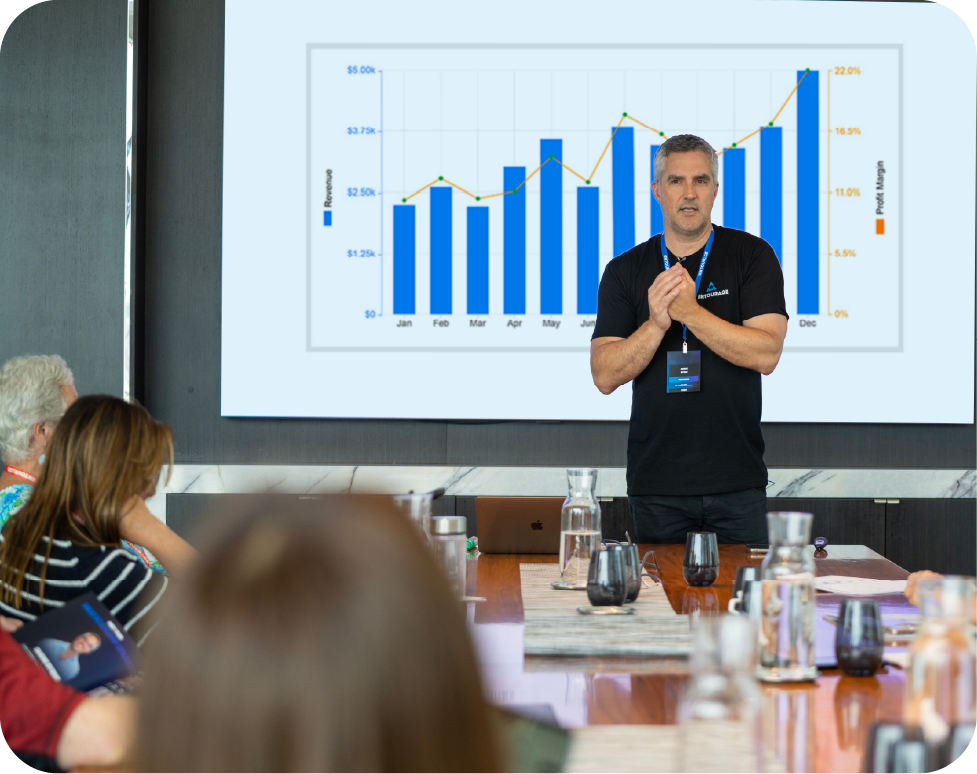In today’s fast-moving world of medical devices, digital health, biotech, and regulated software, bringing a product to market is only half the battle. The other half is demonstrating fda regulatory compliance so you can safely and efficiently launch—and maintain—your product. That’s where the term “FDA compliance development” comes in.
If you’re working on a medical device, health tech platform, or biotech product in the U.S. (or planning to enter the U.S. market), understanding how to structure your development, documentation, and processes to satisfy the Food and Drug Administration (FDA) is absolutely critical. As Corpsoft.io put it: “We help companies bring their products to market safely and efficiently with robust systems and expert-led FDA compliance strategies.”
In this guide we’ll walk through:
-
What FDA compliance means in product development
-
Why it matters
-
A phased process you can follow
-
Key challenges & tips for success
-
How to build internal capability so you’re inspection and audit-ready
Whether you’re a software company entering health, a medical device startup, or a biotech firm with a novel product — this article will give you a practical roadmap.
What is FDA Compliance in Product Development?
At its core, FDA compliance refers to adhering to the regulations issued by the FDA that govern the safety, effectiveness, manufacturing, labeling, and post-market surveillance of products. This includes physical devices, software as a medical device (SaMD), biologics, drugs, and even certain digital health tools.
For example:
-
If you’re developing a Class II medical device needing a 510(k) submission, you’ll need to show substantial equivalence to a legally-marketed device.
-
If you’re building health software that interprets patient data, you’ll need to align with the FDA’s software validation, traceability, risk management and documentation requirements.
-
Even if a product is lower risk, or intended for export, understanding what “FDA compliant” means can avoid costly delays or enforcement actions.
Whether you’re developing FDA medical devices or implementing FDA compliant software, we guide you from initial planning to regulatory certification and beyond. You can also use a company in New Jersey to do this.
Why FDA Compliance Matters
There are several reasons why you should build with compliance in mind from day one:
1. Avoid costly delays, recalls and enforcement actions
Non-compliance can trigger FDA enforcement, product recalls, import bans, or warnings.
2. Ensure safe product development
In regulated industries the stakes are high—patient safety, regulatory protection, and public trust all depend on robust development and documentation.
3. Accelerate market access and build credibility
A well-prepared product that aligns with FDA expectations can move faster through regulatory reviews, and will be more credible with partners, customers, and regulators.
4. Simplify audits and inspection readiness
When you adopt tools and processes for full traceability, audit-trails and documentation from the start, you're better prepared for regulatory reviews or post-market surveillance.
For a growing digital agency or development house—say if you’re working with clients in healthcare—being able to deliver “FDA-compliant development” is a serious value-add.
A Step-by-Step Process for FDA Compliance Development
Based on the Corpsoft.io breakdown, here’s a five-phase roadmap you can use:
1. FDA Compliance Assessment & Gap Analysis
Begin by evaluating your current product, system, documentation, and processes against applicable FDA standards. Ask:
-
Which class is our product/device?
-
What’s the regulatory pathway (e.g., 510(k), De novo, PMA, SaMD)?
-
Which software or manufacturing standards apply (e.g., IEC 62304 for medical device software, ISO 13485 for quality systems)?
-
What gaps exist in design history, risk management, traceability, validation or labeling?
Corpsoft.io lists this as Step 01 in their process.
2. Regulatory Strategy Development
Once you understand your gaps, build a regulatory roadmap. This includes:
-
Submission type and timeline (e.g., FDA 510(k) clearance)
-
Key documentation and testing requirements
-
Labeling and marketing plan aligned with regulatory requirements
-
Systems needed for post-market monitoring
As per the service page: “We build a product-specific roadmap that addresses FDA certification requirements, labeling, risk controls, and submission timelines.”
3. System Integration & Validation
This phase covers the nuts-and-bolts of your development and quality system:
-
Implement or enhance compliant software tools (e.g., tracking systems, validation records, risk management platforms)
-
Ensure systems are validated appropriately (for regulated software: validation, change control, traceability)
-
Integrate processes and tooling so your team can maintain compliance during development and production
Corpsoft.io describes: “We implement or enhance medical-device compliance software … help you meet key expectations like validation, tracking, and reporting.”
4. Documentation & Submission Support
No regulatory pathway works without documentation. In this phase you:
-
Prepare design history files, technical files, labeling, clinical/bench testing reports
-
Build submission packages (e.g., 510(k) pre-market notification, PMA application)
-
Ensure all deliverables meet FDA format and content expectations
From the page: “Our team prepares technical files, labeling content, and clinical data required for FDA regulatory certification — from 510(k) to PMA submissions.”
5. Risk Management & Post-Market Monitoring
Compliance doesn’t stop at launch. You must maintain vigilance. Tasks include:
-
Establishing a risk management plan (ISO 14971, etc)
-
Implementing post-market surveillance and complaint handling systems
-
Tracking field performance, adverse events, and feedback for continuous improvement
According to the source: “We guide you through FDA compliance risk management protocols and implement tools for long-term FDA compliance monitoring.”
Key Benefits of a Compliance-First Approach
When you build your product and systems with compliance in mind, you unlock several strategic benefits:
-
Avoid product recalls, shipment holds and regulatory penalties.
-
Use real-time compliance monitoring tools and robust systems that scale.
-
Meet FDA labeling, audit and inspection standards with confidence.
-
Strengthen credibility with regulators, partners, and end users.
For your digital agency (or tech-company clients), that translates into smoother launches, fewer surprises, and a stronger value proposition.
Common Challenges & How to Overcome Them
Challenge #1: Underestimating the documentation burden
Many teams focus on product features and user experience, but neglect the required design history, traceability matrices, risk logs, verification/validation records.
Tip: Start early with your documentation framework. Use templates and tools aligned with FDA expectations.
Challenge #2: Complying with software standards
Software as a medical device (SaMD) or regulated software needs special attention — e.g., software lifecycle process, validation, cybersecurity risk, change control.
Tip: Adopt recognized standards (e.g., IEC 62304, ISO 14971) and engage software engineers knowledgeable in regulated environments.
Challenge #3: Post-market monitoring isn’t just “nice to have”
It’s a regulatory requirement. Skipping it puts you at risk of non-compliance or worse.
Tip: Build your post-market surveillance plan into your roadmap from day one – set up feedback loops, complaint tracking, field data capture.
Challenge #4: Changing regulations and guidance
Regulations evolve, guidance documents change, especially in digital health and software.
Tip: Stay informed. Allocate resources for regulatory intelligence and update your compliance strategy accordingly.
Challenge #5: Misaligned stakeholder expectations
Engineering, product, regulatory and quality teams often operate in silos. If your product roadmap doesn’t integrate compliance, surprises happen.
Tip: Establish cross-functional governance. Have regulatory/quality input during product planning, not just at the end.
Building Internal Capability: What You Should Invest In
As you prepare to operate in regulated spaces, consider these foundational investments:
-
Quality Management System (QMS): Whether for devices or regulated software, you’ll need a documented QMS (e.g., ISO 13485, 21 CFR Part 820) and processes for design control, risk management, CAPA, change control.
-
Compliance Software Tools: Tracker systems for design history, verification/validation, risk logs, label control, etc. Corpsoft.io emphasises “medical device compliance software” and “FDA compliance software” to provide full traceability and audit support.
-
Skillsets and Training: Regulatory affairs experts, quality assurance, software validation specialists, and engineering versed in regulated development are key. Investment in training helps.
-
Governance & Documentation Culture: From early design stages through to post-market, every change, verification result, and customer feedback needs to be captured, logged, and reviewed.
-
Post-Market Monitoring Systems: If you’re launching a product in the U.S., you’ll need complaint handling, adverse event reporting, field performance tracking, and mechanisms for corrective action.
-
Regulatory Strategy & Intelligence Team: Regulations shift. Whether digital health, device software, or combination products, staying ahead gives you a competitive edge.
When to Engage External Experts
Depending on your organisation’s size and capability, it may make sense to partner with external specialists. Typical scenarios:
-
You’re a startup building your first medical device or SaaS-for-health and need regulatory/quality system design from scratch.
-
You have complex software (e.g., AI/ML in healthcare) where regulatory pathways are evolving.
-
You’re scaling internationally and need to align with FDA and other jurisdictions.
-
You prefer a partner to provide “ready-to-go” tools and processes (e.g., compliance software platform) to speed time to market.
The service page from Corpsoft.io emphasises that their team “specialises in helping companies in the medical, biotech, and life sciences industries navigate the complexities of FDA regulatory compliance.”
Summary & Next Steps
Bringing a regulated product to the U.S. market—whether it’s a medical device, digital health software, or biotech innovation—demands more than just great features. You must develop with compliance-first in mind: design controls, validation, documentation, risk management, submission readiness, and post-market vigilance.
By following the five-phase roadmap above—Gap Analysis → Regulatory Strategy → System Integration/Validation → Documentation/Submission → Risk & Post-Market Monitoring—you’ll position yourself for success.
Next steps for you as a business or agency:
-
Conduct a gap-analysis of your current product/processes versus FDA requirements
-
Develop a regulatory roadmap with clear deliverables and timelines
-
Ensure your tooling, processes and documentation support compliance from day one
-
Build (or lean on existing) expertise in regulatory affairs, quality, software validation and documentation
-
Embed post-market and field surveillance into your product lifecycle, not as an afterthought
Related Categories
Ryan Terrey
As Director of Marketing at The Entourage, Ryan Terrey is primarily focused on driving growth for companies through lead generation strategies. With a strong background in SEO/SEM, PPC and CRO from working in Sympli and InfoTrack, Ryan not only helps The Entourage brand grow and reach our target audience through campaigns that are creative, insightful and analytically driven, but also that of our 6, 7 and 8 figure members' audiences too.





